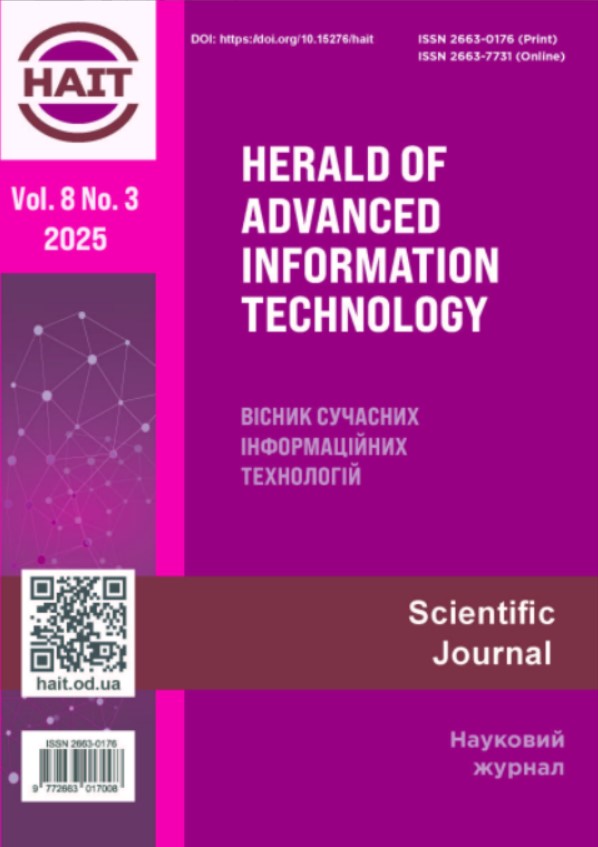Development of a geoinformation method for assessing the accessibility of medical services in community infrastructure development projects
Main Article Content
Abstract
The article develops a geoinformation method that provides a solution to the scientific and applied problem of assessing the accessibility of medical services in community infrastructure development projects. Solving this problem is the basis for planning community infrastructure development during their post-war reconstruction. The relevance of the study is determined by the need to improve the effectiveness of management decisions regarding the assessment of medical service accessibility to community populations in conditions of spatial unevenness in the distribution of medical infrastructure facilities and limited resources. The work aims to develop a geoinformation method for assessing the accessibility of medical services for the population of communities, based on the use of open geospatial data from the OpenStreetMap framework, which takes into account the topology of the road network, the spatial distribution of medical facilities, the density and distribution of the population in the communities, and the time parameters of access to medical services. The proposed method is implemented on the basis of open data using OpenStreetMap tools, OSMnx and NetworkX libraries, which ensure flexibility, scalability and transparency of calculations. A distinctive feature of the method is the automated determination of areas of community access to medical services based on the construction of isochrones around medical infrastructure facilities, taking into account the type of facility and the acceptable time of arrival of community residents to them. The developed geoinformation method was tested for adequacy. It was found that deviations are within 1 minute or 0.3 km. The results of the experimental application of the method on the example of a typical territorial community showed its ability to identify ‘grey areas’, i.e. settlements that are not sufficiently covered by the network of medical institutions, and to assess the impact of changes in the structure of the medical network on the overall accessibility of medical services to the population. The practical value of the study lies in the creation of an algorithm that forms the basis for the development of a system to support management decisions on the strategic development of communities. In particular, in terms of assessing the population's access to medical services for planning community infrastructure development projects. The proposed method can be further expanded by integrating demographic forecasts, population mobility scenarios, and data on the state of road infrastructure, which opens up prospects for its use in a wider range of community infrastructure development project planning tasks.



